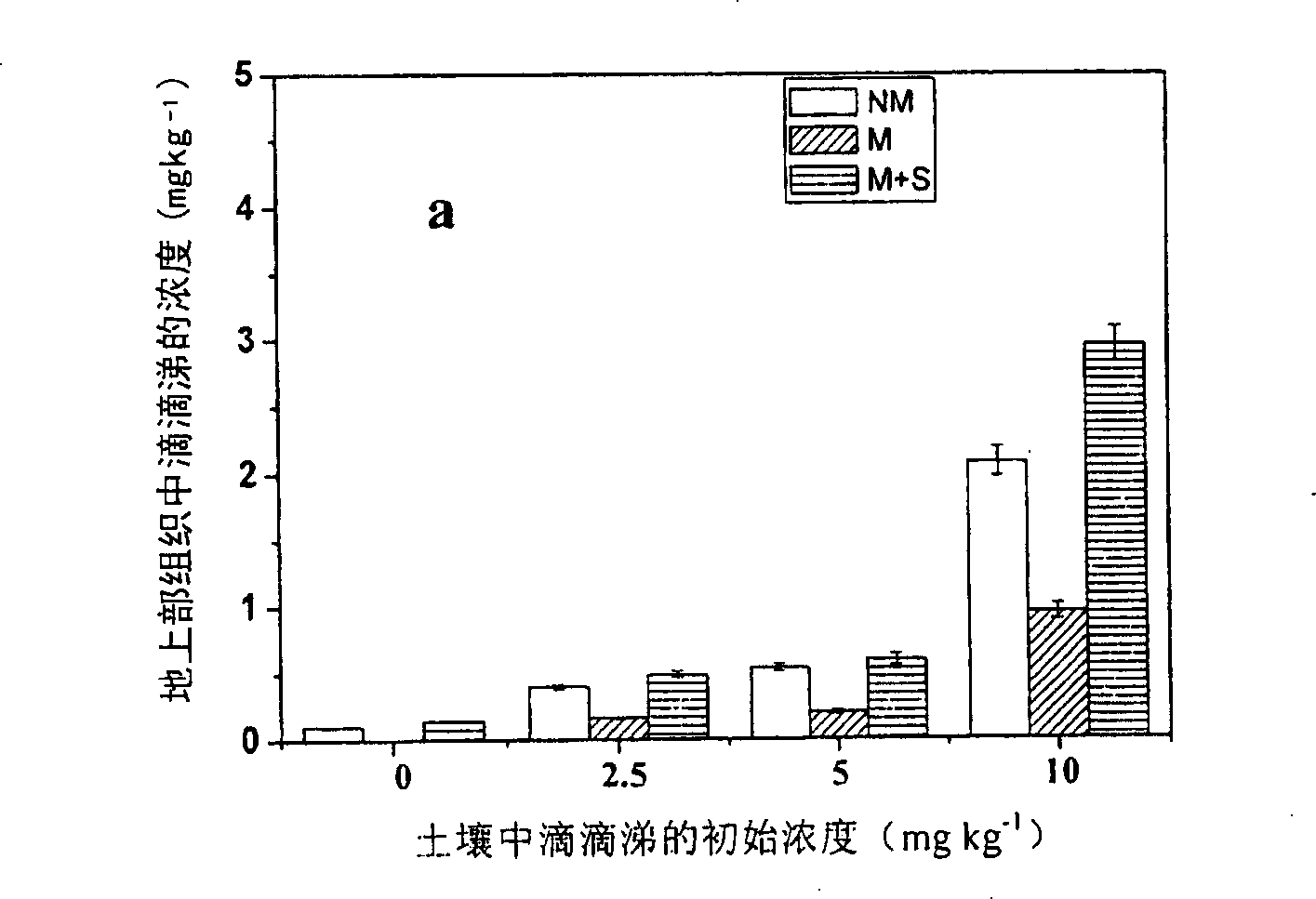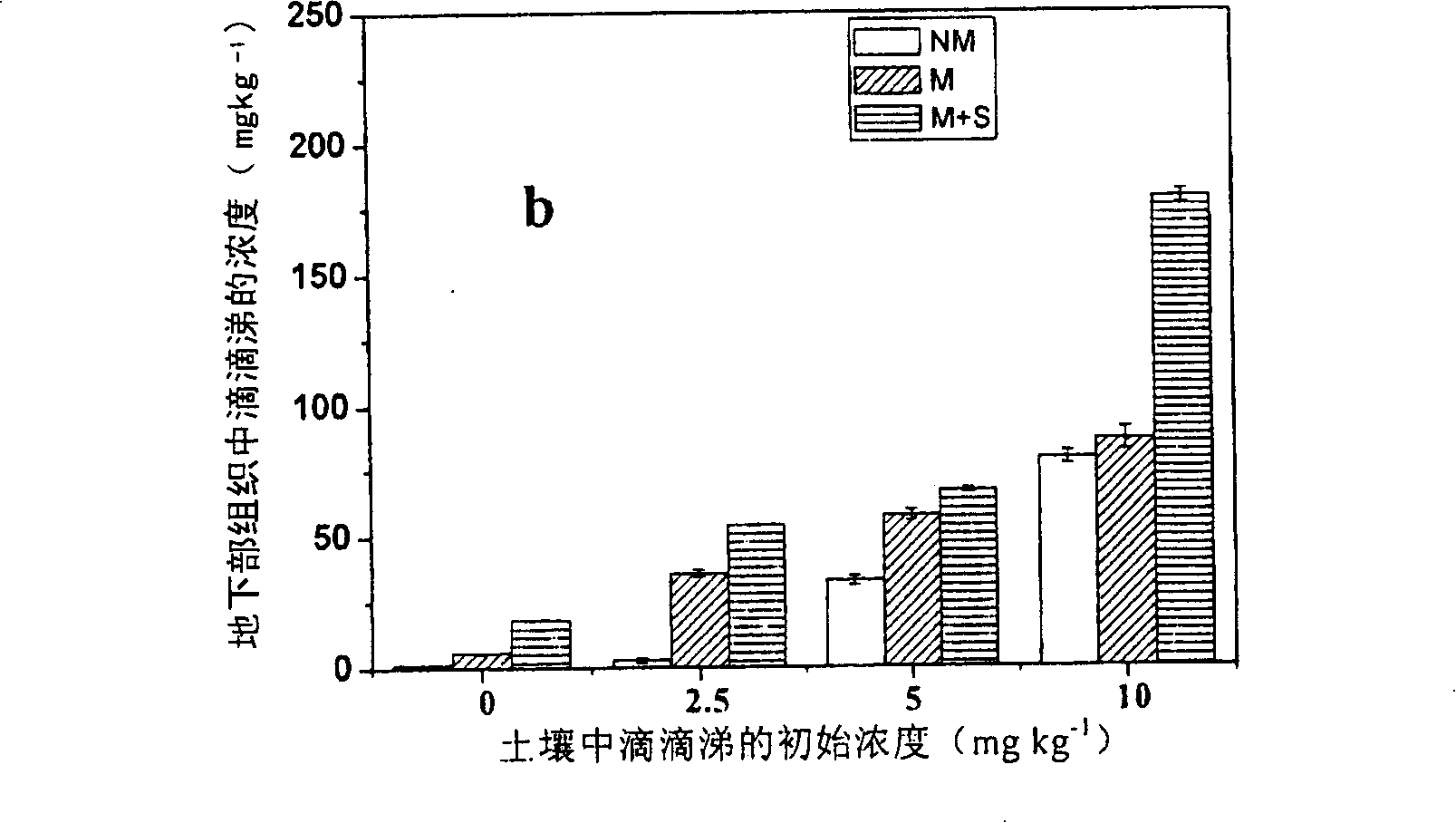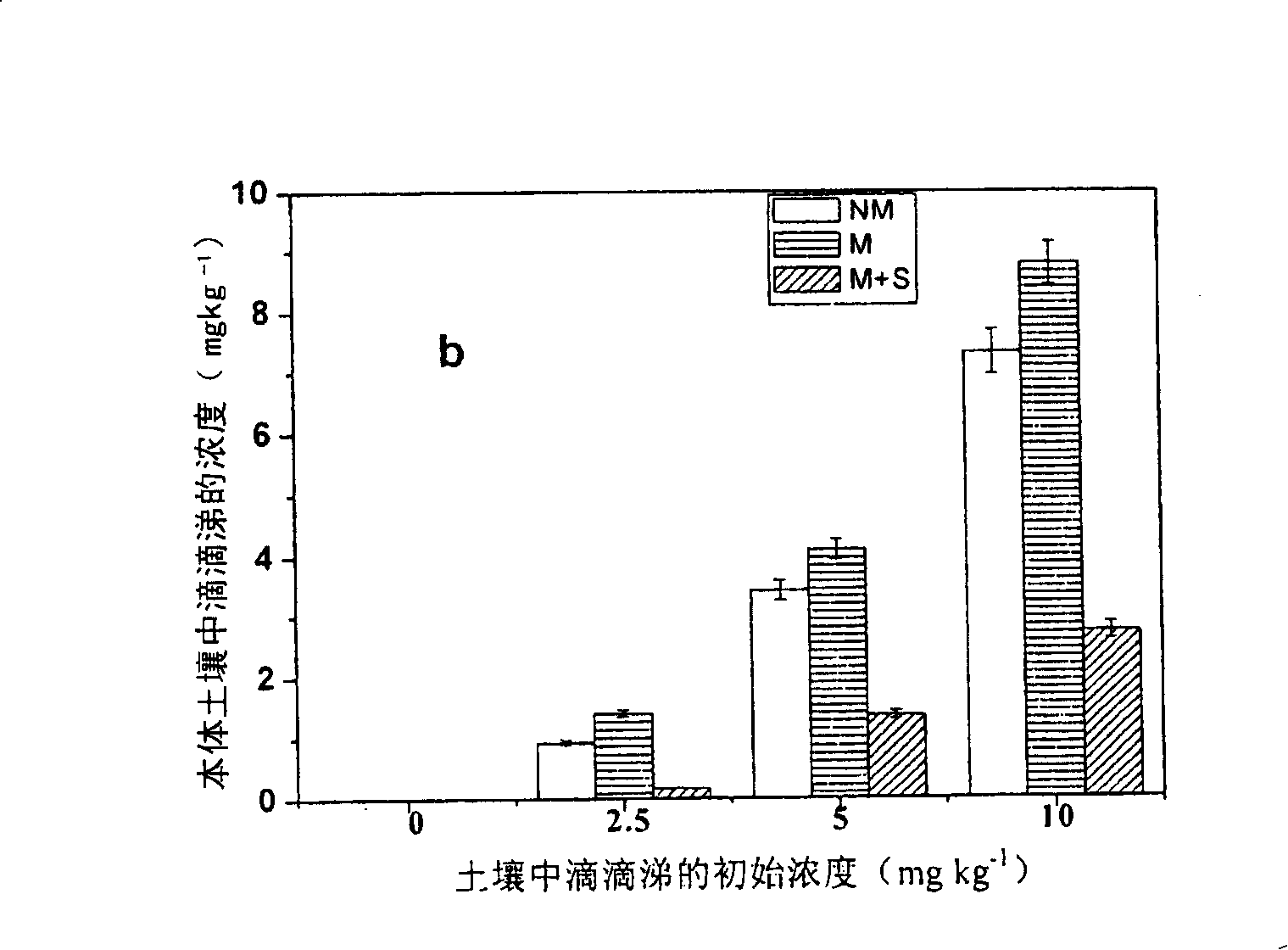Method of increasing gesarex polluted soil phyto remediation efficiency
A technology for contaminated soil and phytoremediation, which is applied in the field of contaminated ecological restoration and can solve problems such as affecting the efficiency of soil restoration.
- Summary
- Abstract
- Description
- Claims
- Application Information
AI Technical Summary
Problems solved by technology
Method used
Image
Examples
Embodiment Construction
[0023] In the following, the present invention will be described in further detail in combination with specific embodiments.
[0024] First pass the soil through a 2mm sieve and the river sand through a 1-2mm sieve, mix them according to the weight of 1:1, and sterilize them with 10kGy irradiation to kill the fungal hyphae and fungal spores in the soil, and mix them into the base fertilizer. Base fertilizer: N, 60mg kg -1 ; P, 30 mg kg -1 ; K, 67 mg kg -1 , and other trace elements. The experiment was designed to deal with 4 DDT concentrations, the concentrations were 0, 2.5, 5, 10mg kg -1 . First dissolve the required amount of DDT with n-hexane, add it to a small part of the test soil, and after the n-hexane is completely volatilized (1~2d), mix it into all the test soil step by step, stir well, weigh and load Put it into pots and pots, and fill each pot with 650g of soil. The experiment involved three treatments: no inoculation, inoculation, inoculation and addition o...
PUM
 Login to View More
Login to View More Abstract
Description
Claims
Application Information
 Login to View More
Login to View More - R&D
- Intellectual Property
- Life Sciences
- Materials
- Tech Scout
- Unparalleled Data Quality
- Higher Quality Content
- 60% Fewer Hallucinations
Browse by: Latest US Patents, China's latest patents, Technical Efficacy Thesaurus, Application Domain, Technology Topic, Popular Technical Reports.
© 2025 PatSnap. All rights reserved.Legal|Privacy policy|Modern Slavery Act Transparency Statement|Sitemap|About US| Contact US: help@patsnap.com



